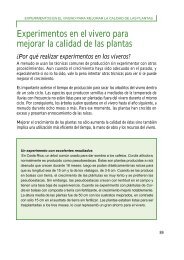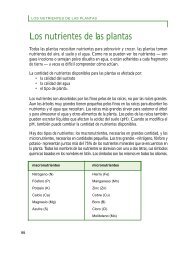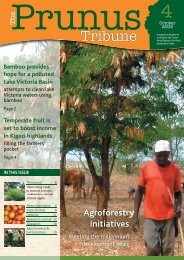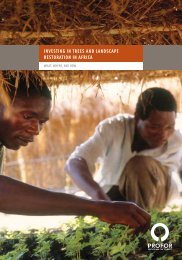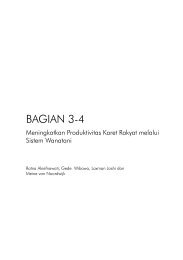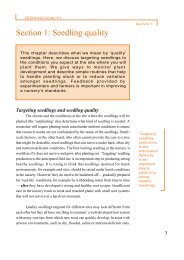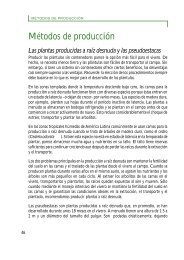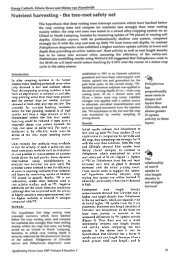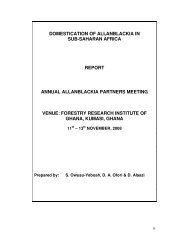Section 5: Nursery and plant hygiene - World Agroforestry Centre
Section 5: Nursery and plant hygiene - World Agroforestry Centre
Section 5: Nursery and plant hygiene - World Agroforestry Centre
Create successful ePaper yourself
Turn your PDF publications into a flip-book with our unique Google optimized e-Paper software.
NURSERY AND PLANT HYGIENEdifficult to control. The best way is probably to issue to staff boots <strong>and</strong> workclothes to wear during work in the nursery <strong>and</strong> to install a dip basin with 10%household bleach solution at the entrance of the nursery through which staff<strong>and</strong> visitors have to walk to disinfect their shoes, especially when they comefrom fields where soil-borne diseases or nematodes are present.<strong>Section</strong> 5Methods ofsurface sterilizationheatchlorinefungicidesFor seeds, tubers <strong>and</strong> roots, hot water soaks(40–55°C) are recommended. Temperature <strong>and</strong>duration depend on the species. You can find thebest range with simple experimenting, forexample by soaking material at two differenttemperatures for half an hour, two hours <strong>and</strong> fourhours.Dipping cuttings into a 10% household bleachsolution for 20 minutes is a practicerecommended for some hardwoods but it shouldbe tested for phytotoxicity on all species first.Seeds or cuttings can be coated with a dust orslurry of fungicides. Captan ® <strong>and</strong> Benlate ® arethe most commonly used fungicides for seedtreatment. Captan ® is a contact fungicide whichkills pathogens present on the seed coat;Benlate ® is a systemic fungicide whichpenetrates into the seed <strong>and</strong> has an effect on theembryo during germination, giving the seed alonger-lasting protection. However, mostfungicides have a high toxicity to seeds <strong>and</strong> theyoften act only on one of the number ofpathogensthat are usually present. Recent work suggeststhat coating the seed with a bacterialformulation, esp. Trichoderma harzianum orPseudomonas spp., would be helpful. However,for the time being, this technique is out of reachfor most institutions in developing countries.61






